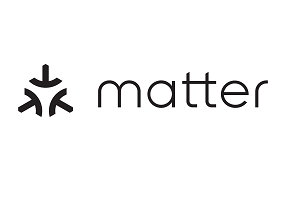ByteSnap sets out benefits for IoT device development that will enable more smart homes

There is unprecedented interest in the Matter Standard, the new smart home interoperability standard being developed by Google, Apple, Amazon, Samsung, Comcast, GE and many other brands, says Dunstan Power, director of ByteSnap Design. This is designed to help devices work together in a single smart home ecosystem.
With World IoT Day on 8 April 2022, ByteSnap Design, a specialist in embedded systems design and development, is setting out the key benefits of the new standard for anyone in the IoT device development or smart home technology fields.
Within the last decade, the Internet of Things (IoT) has gained significant traction and the smart home market alone is now estimated to be worth about US$53 billion (€47.46 billion) worldwide. Research and innovation into wireless communication have resulted in the creation of networking protocols like Bluetooth, Wi-Fi, Zigbee and Thread. Ideally, these standards should co-exist peacefully, however, they don’t. Although The Matter Standard has been delayed till later this year, it was created to address interoperability challenges, so here Dunstan Power, director at ByteSnap Design, explains its immediate benefits:
1) Compatibility – all devices working together
The smart home industry is ripe for a more harmonised ecosystem, which would bring together all networks that have been developed individually, making it easier for developers to create new products, reduce the time to market, and have consistency and usability benefits of being under one system for end users. That’s the purpose of the Matter Standard as it gives direct IP control for devices to speak straight to the internet.
Matter is in layer 6 of the Open Systems Interconnection model (OSI), which sits on top of all the existing protocols such as Thread, Wi-Fi, Bluetooth and Zigbee, becoming the bridge between devices that have not yet been able to communicate with one another. It will make homes smarter, and also resonate in other IoT uses, such as energy, smart city, automotive, retail, industry, healthcare and buildings, where it will become much easier to connect and replace small ecosystems which can’t communicate with each other or the outside world.
Supported by over 200 firms, consumers can be sure that any certified Matter device will operate and communicate with any other Matter device. Another advantage that comes from this interoperability between devices from different manufacturers is that there will be more competition in the IoT space, as they will no longer be locked into one specific ecosystem, such as Samsung’s SmartThings.
2) Simplicity – consumer control over the interaction, and bringing products to market quickly
A major problem that consumers are facing is the number of different ecosystems they need to have, or the need to spend money and compromise on using one ecosystem, which may be missing features. They also need to ensure that the devices they buy have the correct protocol to be able to communicate with one another. Matter will also benefit consumers because they will have confidence that the communications between all devices using the Matter standard will be reliable and secure.
A dilemma for developers is writing the same code on top of protocols like Thread to communicate similar sorts of data. This is much the same as writing an audio data processing layer on top of BLE, instead of a protocol already existing in the BLE layer to do this.
Matter provides an SDK for developers to use a standardised way of communicating, on top of all the protocol layers that will be supported such as Thread, Zigbee and Wi-Fi. After Matter comes into play, developers will be able to focus entirely on creating products without worrying about how to resolve any connectivity or interoperability issues in the design and development phase.
The new standard isn’t trying to re-invent the wheel by replacing existing standards, but builds on top of those to connect them together. Any Matter-certified end product will be plug and play. Devices that were not previously guaranteed communication in a different ecosystem will complement any smart home ecosystem using that standard. But, the Matter Standard will also simplify the developer experience by reducing functional specifics that could limit interoperability.
4) Open source – resilience rather than obscurity
This new standard is also a plus for developers and companies creating devices using Matter. Most of the code base has been provided by Apple and Google, with Silicon Labs also contributing. The standard is completely open source, improving security and reliability, as anybody can read and make changes to the source code. It is still under its old name project-chip at the following git link:
The standard provides a common layer for device life-cycle events, with an open-source approach using contributions from market-tested smart home technologies. Developers can leverage those to drop-in code and development tools that are tested, validated and supported by members of the Alliance. This will deliver interoperability without any risks or issues in connectivity and communications.
Conclusion

Dunstan Power
To be part of the club, companies will have to pay a certification fee to the Connectivity Standards Alliance (CSA), to market their products as Matter compatible. However, this could be seen as a good thing, as it means that only devices which have been properly developed and tested will be out on the market.
Matter is still in its infancy, as can be seen by the 1.4k issues currently open in the GitHub repository, there is a lot of work still to do for any products with Matter to reach the market.
For businesses looking for help in the smart home industry or are looking to develop any embedded device, and need some help with hardware and/or software, the ByteSnap team has strong expertise in most communication protocols, and has developed and gone through full Zigbee compliance for a smart meter we have developed, of which the protocol will likely have a large percentage of usage in the Matter ecosystem.
The author is Dunstan Power, director of ByteSnap Design.
Comment on this article below or via Twitter @IoTGN
